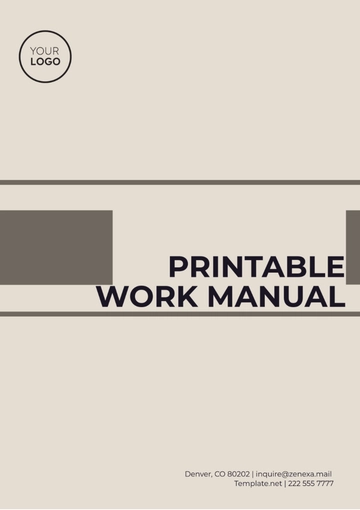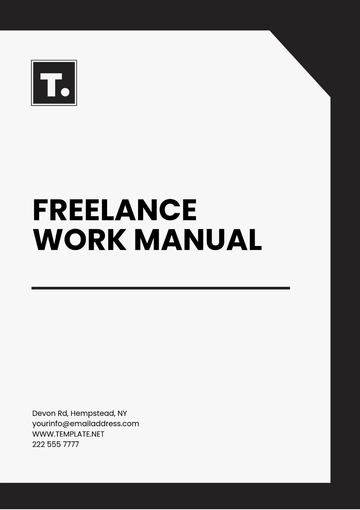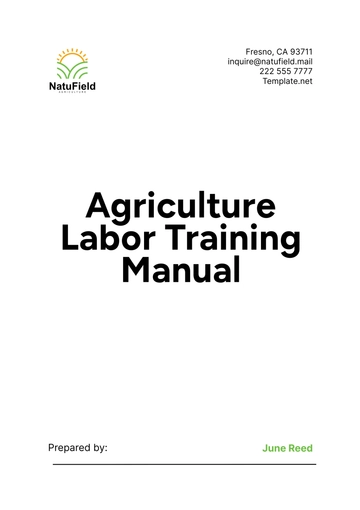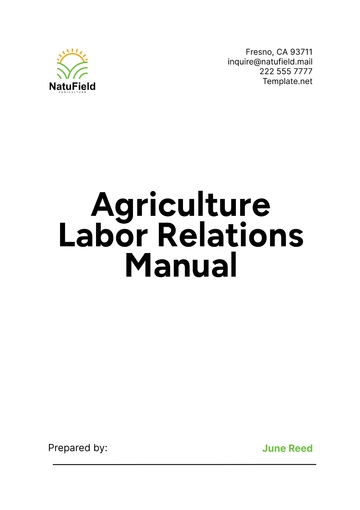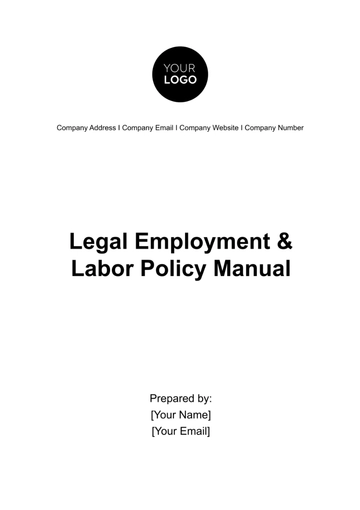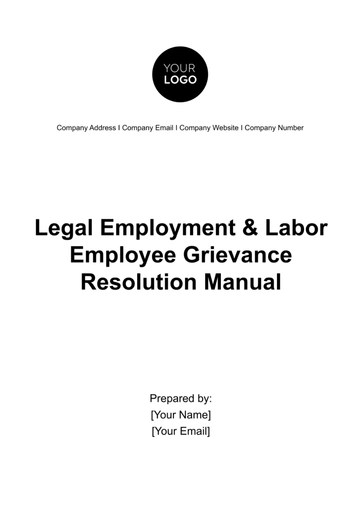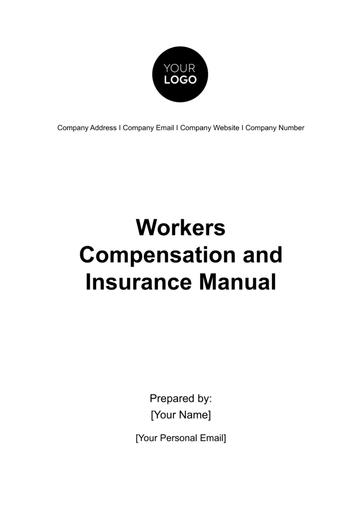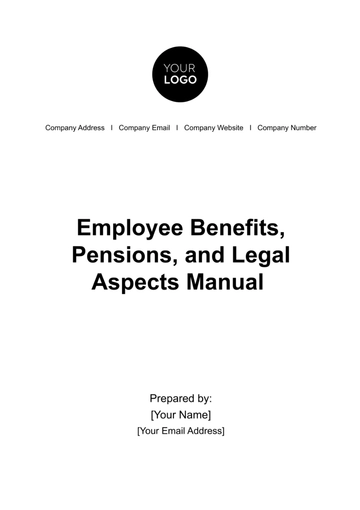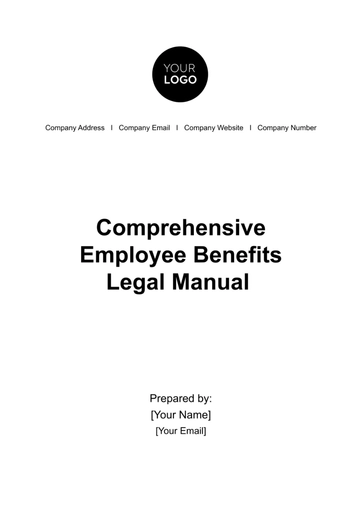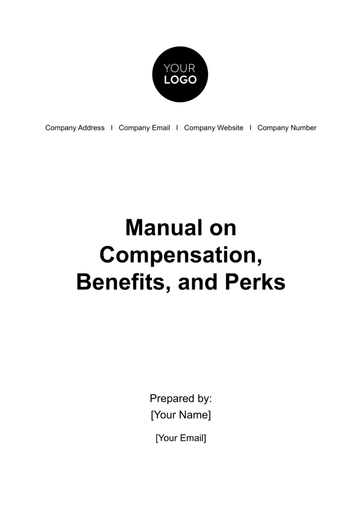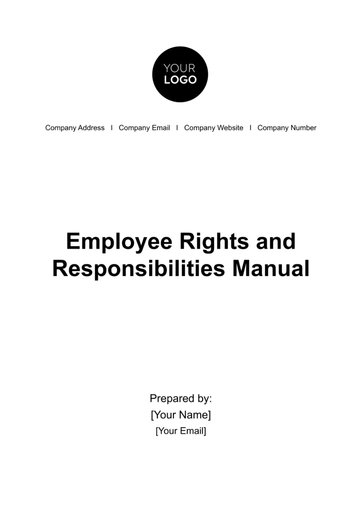Free Comprehensive Employee Benefits Legal Manual HR
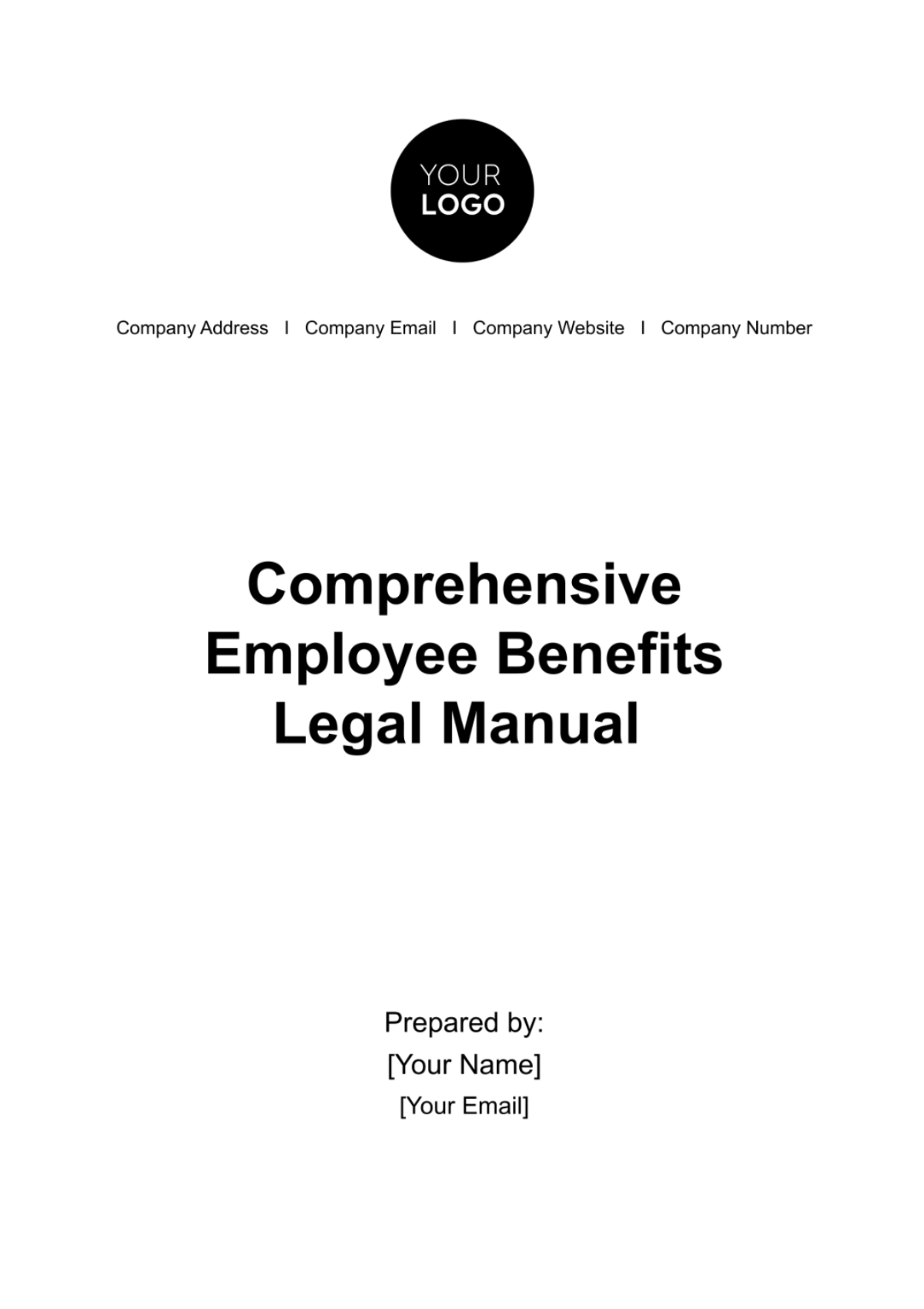
Legal Manual
Table of Contents
1. Introduction .................................................................................................................2
2. Objectives ...................................................................................................................2
3. Scope ..........................................................................................................................3
4. Definitions ..................................................................................................................3
5. Benefits Overview .....................................................................................................4
5.1 Health Insurance: .....................................................................................................4
5.2 Retirement Plans: ....................................................................................................4
5.3 Paid Time Off: ..........................................................................................................4
5.4 Other Perks and Allowances: .................................................................................5
6. Legal Framework .......................................................................................................5
6.1 ERISA: ........................................................................................................................5
6.2 COBRA: .....................................................................................................................5
6.3 HIPAA: .......................................................................................................................6
6.4 FMLA: .......................................................................................................................6
7. Employee Classification and Eligibility .....................................................................6
8. Implementation and Administration .........................................................................7
9. Compliance .................................................................................................................8
Periodic Audits ...............................................................................................................8
Legal Updates ................................................................................................................8
Employee Training .........................................................................................................9
Record-keeping .............................................................................................................9
Non-compliance Consequences .................................................................................9
Reporting and Transparency .......................................................................................9
10. Employee Acknowledgment Form .........................................................................9
11. Appendices...............................................................................................................10
Introduction
The Comprehensive Employee Benefits Legal Manual serves as an essential guide for both employees and the management team at [Company Name]. Created with meticulous care, this manual elucidates the intricate web of legal regulations and standards that surround the provisioning of employee benefits. The primary aim is twofold: first, to delineate the legal obligations of [Company Name] with regard to offering and managing various benefits, and second, to explicitly state what employees can expect in terms of their entitlements to these benefits. By covering everything from healthcare plans to retirement benefits, we strive to foster a transparent, legally compliant, and employee-friendly benefits environment. We believe that well-informed employees are more engaged and productive, which is why this manual is designed to be a comprehensive resource that addresses all pertinent legal aspects of our benefits program.
Objectives
To Ensure a Uniform Understanding and Implementation of Employee Benefits: The first objective of this manual is to create a uniform understanding among all stakeholders—employees, HR personnel, and management—regarding the types of benefits offered, their value, and the procedures for availing them. Consistency in understanding will streamline administration, minimize misunderstandings, and ensure that benefits are distributed fairly and efficiently.
To Comply with Federal and State Laws Concerning Employee Benefits: Regulatory compliance is not just a legal requirement but also a hallmark of ethical business practices. This manual aims to serve as a comprehensive guide for adhering to all federal and state laws concerning employee benefits. By aligning our policies with legal statutes, we aim to mitigate risks and avoid any legal complications or penalties.
To Provide Clarity on the Eligibility and Administration of Benefits: The complexity of benefits administration can often lead to confusion and misinterpretation. This manual sets out to provide clear, understandable criteria for eligibility and the steps involved in claiming different benefits. By offering an authoritative resource on how benefits are administered, we aim to empower our employees and ensure that they can fully utilize the benefits they are entitled to.
Scope
The scope of this Comprehensive Employee Benefits Legal Manual extends to all individuals who have a working relationship with [Company Name]. This includes full-time employees, part-time employees, contractors, and interns. It is designed to be a definitive resource for understanding and navigating the company's employee benefits program. Regardless of the employment status or level within the organization, the guidelines set forth in this manual are universally applicable. It serves as the cornerstone for defining what benefits are available, who is eligible to receive them, and how they are administered. Additionally, the manual acts as a tool for the Human Resources department to maintain legal compliance and ethical standards in benefits administration. It is crucial that everyone referenced under this scope familiarize themselves with the contents of this manual to ensure mutual understanding and compliance.
Definitions
Beneficiary: A beneficiary refers to an individual who is eligible to receive benefits under the various plans and programs offered by [Company Name]. Beneficiaries often include the employee themselves, but may also extend to dependents or other designated individuals in certain circumstances. It is important for employees to accurately identify their beneficiaries to ensure proper distribution of benefits, especially in the case of life insurance or retirement funds.
ERISA: The Employee Retirement Income Security Act (ERISA) is a federal law enacted in 1974 that sets minimum standards for pension plans and employee benefit plans in the private sector. This legislation provides protections for individuals enrolled in these plans, ensuring that they are administered fairly and reliably. Compliance with ERISA is crucial for [Company Name] as it helps safeguard the financial well-being of employees in relation to retirement and health plans.
HIPAA: The Health Insurance Portability and Accountability Act (HIPAA) is a U.S. federal law passed in 1996 that imposes regulations on healthcare providers and employers offering healthcare benefits. HIPAA primarily focuses on the secure handling of individual health information to maintain confidentiality and data integrity. For [Company Name], compliance with HIPAA means ensuring that employee healthcare information is kept confidential and is disclosed only to authorized individuals. It also imposes specific requirements concerning the portability of healthcare plans.
Benefits Overview
The Benefits Overview chapter aims to provide a succinct yet comprehensive summary of the various benefits available to employees, contractors, and interns at [Company Name]. This section outlines the fundamental categories of benefits that the company offers, from health insurance to retirement plans and beyond. Understanding these benefits is crucial for both personal planning and for making informed employment decisions.
5.1 Health Insurance:
At [Company Name], we prioritize the well-being of our employees by offering various health insurance options. These plans are compliant with the Affordable Care Act (ACA) and are designed to meet the diverse healthcare needs of our workforce. Options may include a range of coverage levels and networks, allowing employees to select the plan that best suits their medical needs and financial situation.
5.2 Retirement Plans:
Long-term financial stability is important, which is why [Company Name] offers a 401(k) retirement plan to eligible employees. The plan is managed in accordance with ERISA guidelines to ensure the highest level of fiduciary responsibility. Employees can contribute a percentage of their pre-tax earnings, and in some cases, [Company Name] may offer matching contributions to boost retirement savings.
5.3 Paid Time Off:
Paid time off (PTO) is an integral part of work-life balance. Employees at [Company Name] are entitled to a set number of PTO days per year, which can be used for vacations, public holidays, or sick leave. We encourage employees to make full use of their PTO to recharge, spend time with loved ones, or recover from illness, as this contributes to overall well-being and job satisfaction.
5.4 Other Perks and Allowances:
In addition to standard benefits, [Company Name] offers a range of other perks and allowances to enhance the quality of work life. These may include gym memberships to encourage physical wellness, transportation allowances to ease the burden of commuting, and educational stipends for personal and professional development. The availability of these perks may vary by job role and department, and they are designed to add value to the employment experience at [Company Name].
Legal Framework
The Legal Framework chapter aims to elucidate the various federal laws and regulations that govern employee benefits at [Company Name]. By adhering to these legal standards, we not only ensure the well-being of our employees but also mitigate the risk of non-compliance and associated liabilities. Understanding these laws is crucial for both the Human Resources team in administering benefits and for employees in knowing their rights and responsibilities.
6.1 ERISA:
The Employee Retirement Income Security Act (ERISA) sets the legal landscape for retirement benefits like our 401(k) plans. We are committed to meeting or exceeding ERISA's minimum standards, which include specific reporting and disclosure requirements. ERISA ensures that employees receive the retirement benefits they are promised and that they have sufficient information to make informed decisions regarding their retirement plans.
6.2 COBRA:
Under the Consolidated Omnibus Budget Reconciliation Act (COBRA), employees who lose their jobs or experience a reduction in work hours have the option to continue their health insurance coverage. We strictly adhere to COBRA regulations, providing terminated or transitioning employees with the necessary information and documentation to extend their healthcare benefits under certain qualifying conditions.
6.3 HIPAA:
The Health Insurance Portability and Accountability Act (HIPAA) sets forth stringent rules regarding the privacy and security of health data. [Company Name] ensures that all healthcare benefits are administered in strict accordance with HIPAA regulations. This commitment protects the confidentiality and integrity of employees' sensitive health information.
6.4 FMLA:
The Family and Medical Leave Act (FMLA) allows eligible employees to take up to 12 weeks of unpaid, job-protected leave for specific family and medical reasons while maintaining their health benefits. We fully comply with FMLA requirements, ensuring that eligible employees are aware of their rights and the procedures to avail of this leave, thereby providing job and healthcare security during life's unexpected events.
Employee Classification and Eligibility
This chapter provides a detailed look at employee classification as it pertains to the eligibility for various benefits at [Company Name]. Understanding these classifications is essential for both HR professionals who administer these benefits and employees who avail of them. By clearly delineating the eligibility criteria for different employment statuses, we aim to provide a transparent and fair benefits system.
Table: Benefits Eligibility by Employee Type
Employee Type | Health Insurance | Retirement Plans | Paid Time Off | Other Perks and Allowances |
Full-Time | Eligible | Eligible | Eligible | Eligible |
Part-Time | Not Eligible | Eligible* | Not Eligible | Not Eligible |
Contractor | Not Eligible | Not Eligible | Not Eligible | Not Eligible |
Intern | Not Eligible | Not Eligible | Eligible** | Not Eligible |
Notes:
*Part-time employees may be eligible for retirement plans after fulfilling specific conditions, such as working a minimum number of hours.
**Interns are eligible for paid time off only after completing a probationary period.
Full-time employees enjoy a comprehensive range of benefits, including health insurance, retirement plans, paid time off, and other perks and allowances. Part-time employees, on the other hand, have limited eligibility but may qualify for retirement plans under certain conditions. Contractors are generally not eligible for benefits as they are not considered employees of [Company Name]. Interns, though largely ineligible for most benefits, may qualify for paid time off after a probationary period. This table serves as a general guide; specific cases may vary based on contractual agreements and other exceptional circumstances.
Implementation and Administration
The Human Resources (HR) department of [Company Name] holds the primary responsibility for the day-to-day administration of employee benefits. This encompasses a range of tasks including, but not limited to, benefits enrollment, management, and termination, as well as communication and clarification of benefits policies to employees. HR personnel work closely with benefits providers and other stakeholders to ensure that all offerings are compliant with federal and state laws. They also engage in regular audits to verify the accuracy and integrity of the benefits administration process.
In addition to routine management, the HR department also handles any issues or disputes that may arise concerning benefits. This includes questions about eligibility, clarification of options, and resolution of any grievances. Employees are encouraged to contact the HR department with questions or concerns regarding their benefits package, and HR has the obligation to address these inquiries in a timely and transparent manner. This ensures a cohesive approach to benefits administration, leading to increased employee satisfaction and reduced compliance risks for [Company Name].
Compliance
Ensuring full compliance with federal and state laws concerning employee benefits is a cornerstone of [Company Name]'s Human Resources (HR) policy. This chapter outlines the protocols and mechanisms that have been instituted to maintain compliance.
Periodic Audits
One of the key strategies for ensuring compliance is conducting periodic audits, both internal and external. These audits scrutinize our benefits programs to confirm that they meet all legal requirements. They also serve as a tool for identifying potential gaps or vulnerabilities in our current offerings or administrative processes. Audit outcomes are documented, and any necessary corrective actions are taken promptly.
Legal Updates
Our legal team continuously monitors updates to employment law that might affect our benefits packages. Any significant changes are communicated to the HR department, which in turn, informs employees about how these updates may impact them. Policy adjustments are made accordingly to maintain compliance.
Employee Training
Employees are periodically trained on the various aspects of their benefits package, especially when new policies are implemented or existing policies are revised. This training often includes updates on federal and state laws related to employee benefits. The goal is to ensure that employees are aware of their rights and obligations and are able to make informed decisions.
Record-keeping
A systematic record-keeping protocol is maintained for all employee benefits, which include benefits enrolment forms, policy documents, correspondence, and any dispute records. These records are kept secure and confidential in compliance with data protection laws and regulations.
Non-compliance Consequences
Failure to adhere to legal requirements can have severe consequences, not only for [Company Name] but also for individual employees. Non-compliance can result in fines, legal action, and reputational damage. Employees found deliberately violating compliance protocols may face disciplinary actions, up to and including termination of employment.
Reporting and Transparency
Employees are encouraged to report any concerns or discrepancies they discover in their benefits administration. An open-door policy is maintained for reporting, and whistleblower protections are in place to ensure that no retaliatory actions are taken against anyone reporting non-compliance.
In summary, compliance is a shared responsibility, and [Company Name] is committed to doing its part by instituting thorough checks and measures to ensure that our employee benefits program is fully compliant with all applicable laws and regulations.
Employee Acknowledgment Form
I, [Names], acknowledge that I have received and understood the Comprehensive Employee Benefits Legal Manual.
Signature: _____________________
Date: [Date]
Appendices
Appendix A: Health Insurance Plan Details
At [Company Name], we offer a comprehensive health insurance package that includes a range of coverage options designed to meet the diverse needs of our employees. Our insurance options are ACA-compliant and provide:
Hospitalization coverage
Outpatient services
Prescription drug coverage
Mental health services
Preventive care services
Our health insurance plans are tiered into Basic, Standard, and Premium to provide flexibility in cost and coverage. Employees are given an annual enrollment window to opt for a plan that suits their needs best.
For complete details of our health insurance offerings, including premium costs, coverage limitations, and network restrictions, please contact the HR department at [Company Email].
Appendix B: 401(k) Plan Information
[Company Name] offers a competitive 401(k) plan managed in accordance with ERISA guidelines. The plan features include:
Employer matching up to 4% of employee contributions
A diverse portfolio of investment options
Loan options against your 401(k)
Vesting schedule that encourages long-term employment
The plan is open for enrollment to all full-time employees after completing 90 days of continuous employment. Contribution limits and employer matching details are subject to annual review and may be updated according to federal regulations.
For additional information and enrollment forms, please consult the HR department or email [Company Email].
Appendix C: Paid Time Off Policy
Our Paid Time Off (PTO) policy at [Company Name] includes various categories such as vacation days, public holidays, and sick leave. Key features include:
10 vacation days annually for employees with less than 2 years of service
14 vacation days annually for employees with more than 2 years of service
8 designated public holidays
5 sick leave days per year
Unused PTO can be rolled over but must be used by Q1 of the following year
The policy is designed to offer flexibility while ensuring that operations are not disrupted. PTO requests must be submitted at least two weeks in advance and are subject to approval by your immediate supervisor.
For a complete understanding of our PTO policy, including procedures for unanticipated absences, please consult our HR department or send an email to [Company Email].
These appendices are meant to offer an overview of [Company Name]'s employee benefits. Detailed plan documents and policy guidelines are available through the HR department. Employees are encouraged to review these materials and consult HR for any clarifications.
For further inquiries, please contact [Company Email] or call [Company Phone Number].
- 100% Customizable, free editor
- Access 1 Million+ Templates, photo’s & graphics
- Download or share as a template
- Click and replace photos, graphics, text, backgrounds
- Resize, crop, AI write & more
- Access advanced editor
Take your HR processes to another level with our Comprehensive Employee Benefits Legal Manual HR Template. This all-in-one guide provides clear, legal frameworks for health insurance and retirement plans, ensuring compliance with federal and state laws. This is ideal for HR professionals looking to effectively manage and communicate employee benefits. Download now!
